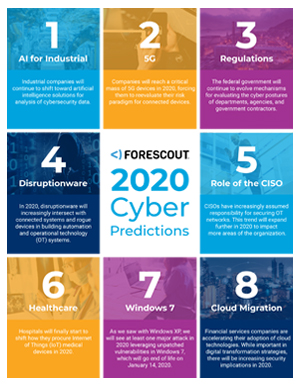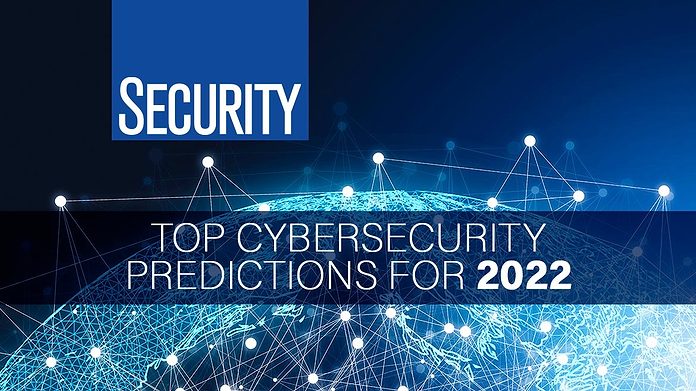The Next Frontier: Insightful Cybersecurity Forecasts for the Coming Year
As we come close to the new year, the cybersecurity landscape gets on the verge of noteworthy transformation. Trick aspects such as the integration of innovative AI innovations, the unavoidable surge of innovative ransomware, and the tightening up of information personal privacy guidelines are shaping the future of electronic safety. In addition, the continuous occurrence of remote job remains to expose brand-new vulnerabilities that companies must browse. Comprehending these dynamics is vital for preparing for the difficulties in advance and purposefully fortifying defenses, yet the ramifications of these changes stay to be completely explored.
Surge of AI in Cybersecurity
In the quickly advancing landscape of cybersecurity, the integration of synthetic knowledge (AI) is becoming a critical force in boosting threat detection and action capacities. AI modern technologies, such as device discovering formulas and deep understanding versions, are being significantly released to examine substantial quantities of information and recognize patterns a measure of protection threats. cyber attacks. This enables organizations to proactively resolve susceptabilities before they can be manipulated
The increase of AI in cybersecurity is particularly substantial in its capability to automate routine jobs, enabling human experts to concentrate on even more complex safety problems. By leveraging AI, cybersecurity teams can lower reaction times and improve the precision of threat analyses. Additionally, AI systems can adjust and discover from brand-new risks, continually fine-tuning their discovery mechanisms to remain ahead of destructive actors.
As cyber risks come to be much more innovative, the requirement for advanced options will certainly drive additional financial investment in AI innovations. This fad will likely lead to the growth of enhanced safety tools that integrate anticipating analytics and real-time surveillance, ultimately fortifying business defenses. The change in the direction of AI-powered cybersecurity services stands for not simply a technical change but an essential adjustment in just how organizations approach their safety approaches.
Increase in Ransomware Attacks
Ransomware assaults have actually ended up being a widespread risk in the cybersecurity landscape, targeting organizations of all sizes and throughout numerous fields. As we advance into the coming year, it is anticipated that these assaults will certainly not just raise in regularity but likewise in class. Cybercriminals are leveraging sophisticated methods, consisting of making use of synthetic intelligence and maker learning, to bypass traditional safety and security steps and make use of vulnerabilities within systems.
The escalation of ransomware attacks can be credited to several elements, including the increase of remote work and the growing reliance on digital solutions. Organizations are frequently unprepared for the developing risk landscape, leaving vital facilities vulnerable to breaches. The economic effects of ransomware are incredible, with firms dealing with large ransom money demands and possible lasting functional interruptions.
Furthermore, the trend of dual extortion-- where assaulters not just encrypt information yet likewise endanger to leakage sensitive information-- has actually gotten traction, better persuading sufferers to abide with needs. Because of this, services need to prioritize durable cybersecurity measures, consisting of regular backups, staff member training, and event feedback planning, to alleviate the dangers related to ransomware. Failure to do so can lead to ravaging effects in the year ahead.
Development of Information Personal Privacy Regulations
The landscape of data personal privacy regulations is going through considerable transformation as governments and companies react to the enhancing problems bordering personal information security. Over the last few years, the execution of extensive frameworks, such as the General Information Protection Law (GDPR) in Europe and the California Consumer Personal Privacy Act (CCPA) in the United States, has actually set a criterion for stricter privacy legislations. These laws emphasize customers' civil liberties to control their information, mandating transparency and liability from companies that collect and refine individual information.

Additionally, organizations will require to improve their compliance strategies, spending in advanced innovations and training to safeguard delicate information. The advancement of data personal privacy guidelines will not just effect exactly how businesses run however also shape customer expectations, cultivating a culture of trust fund and safety and security in the electronic landscape.
Growth of Remote Work Susceptabilities
As organizations proceed to embrace remote work, susceptabilities in cybersecurity have significantly concerned the center. The change to flexible work plans has exposed important voids in security procedures, specifically as employees gain access to delicate information from varied places and tools. This decentralized work environment develops an expanded attack surface for cybercriminals, who exploit unsecured Wi-Fi networks and personal gadgets to infiltrate business systems.

To minimize these vulnerabilities, companies should focus on extensive cybersecurity training and apply find out robust protection frameworks that incorporate remote work situations. This consists of multi-factor authentication, normal system updates, and the establishment of clear procedures for information access and sharing. By attending to these vulnerabilities head-on, business can cultivate a much safer remote workplace while preserving functional resilience when faced with evolving cyber dangers.
Advancements in Danger Detection Technologies


Positive hazard detection has actually become a keystone of modern cybersecurity methods, reflecting the urgent demand to combat significantly sophisticated cyber dangers. As companies encounter a developing landscape of susceptabilities, advancements in risk discovery modern technologies are vital in mitigating threats and boosting security positions.
One significant trend is the integration of expert system and equipment learning into threat detection systems. These innovations allow the analysis of huge quantities of information in real time, allowing for the identification of anomalies and potentially harmful tasks that might evade traditional safety and security procedures. Furthermore, behavioral analytics are being executed to develop baselines for normal user activity, making it easier to spot variances a sign of a breach.
Furthermore, the increase of automated risk intelligence sharing navigate to this site platforms helps with collaborative defense initiatives throughout sectors. This real-time exchange of details improves situational understanding and speeds up response times to emerging risks.
As organizations remain to purchase these advanced technologies, the effectiveness of cyber protection devices will dramatically enhance, empowering safety and security groups to remain one step ahead of cybercriminals. Ultimately, these advancements will certainly play an essential duty in forming the future landscape of cybersecurity.
Conclusion
In summary, the forthcoming year is anticipated to witness transformative developments in cybersecurity, driven by the combination of AI modern technologies and a noteworthy boost in ransomware attacks. On the whole, these developing characteristics underscore the important relevance of adapting to an ever-changing cybersecurity landscape.
Comments on “Get insights into 7 Cybersecurity Predictions for 2025 to safeguard your data.”